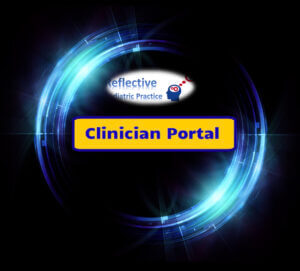Communication and information

Kotokoti/Shutterstock
When it comes to what the clinician should know about a subject should ideally be more than the patient. We all know that people are drawn to do their own internet research. In searching around for material on hammertoes it is obvious that there IS no shortage of information. But what of the quality and depth of information? I wrote this piece on the subject of hammertoes but the content applies to any condition. Here are a few examples. This article is best read with my clinician’s article on hammertoes and what the clinician should know.
Footeducation.com is an international information site and usually performs well. Their fact sheet used is around 2 years old (2018). In another location, I found an article from North Teeside Podiatry and very good it was dating back to 2017. The lack of update seen in the Teeside fact sheet is more exposed perhaps because it recommends contacting the Society of C&P. Of course this body de facto no longer exists having been replaced by the College since this date. The fact sheet provided by the College website provides probably dates back to 2012 or even earlier. Sadly there is no date on the sheet either; a rather important omission these days as we can all find out to our own cost when faced with a legal challenge over consent and advice.
As a former podiatric surgeon, I can say with confidence that your execution of treatment is less likely to be challenged than the failure of providing adequate information. I read a legal report recently that said the patient did not understand that there could be bone fragments left after surgery and this was construed as being below the standard expected. Who hasn’t seen bone fragments that in themselves make little difference unless related to iatrogenic fractures! Anyway to stay on the line of enquiry…
Back to the internet and information about hammertoes. Know where to look and ensure this is helpful to your patient. You could take the view that BoFAS appears to take, and this is to provide generic or broad advice alone. This avoids too many avenues of discussion but leaves much up to the clinician to discuss. Or you take the information sheet from the College of Podiatry resource which is well structured but can be too compact. At the time this type of sheet was considered the go-to fact sheet. Neither critique levelled at either BoFAS or CoP sources is intended, but it means that without careful explanation any such sheet can be too complex (compact) or too general to bear any meaningful comprehension. On the other hand, most patients appreciate any form of information and so you are in a win-win. But remember litigation will often reveal a different view if your information is too general or difficult to understand.
Getting quality backing
The North Tees sheet on hammertoes is good and is backed by the NHS. The layout appeals to the patient’s needs. Furthermore, it looks at the language of the patient. This implies a certain sensitivity around readability. This brings me back to the Flesch score for ease of reading. Click on my July article covering Flesch scores.
Any reference to a website must be judged with caution. It is not just a case of being out of date but in fact providing useful information that offers choice avoiding irrelevant information. A point made in my recent book that makes constructive criticism around some material written by our professional bodies. The criticism is based around the difficulty in locating information. Doubtless in time this will change, but the problem must be recognised before it can be rectified. One of the burdens of any professional experience is the paucity of those willing to write material that might otherwise seem banal.
Solving problems with websites

connect|EPS10 vector/Shutterstock
Part of the problem with accessibility relates to poor linking within a website. Now linking does not happen overnight. I found that until I had written over 30 articles, the linked search facility on WordPress was not as robust as I had wished. This was one of those ‘Eureka’ moments! An electronic index is important and of course, I have created (content) one here as well as utilising the search. But ‘tags’ that relate to subject headings are important to identify key elements within an article. Most modern journals will also call tags keywords. These words will be picked up on websites allowing useful searches.
Podiatry Today is a USA journal magazine probably equivalent to Podiatry Now (COP) and Podiatry Review (IOCP) in the UK. It takes a broad-angle rather than holds out that it performs like a heavy-duty podiatry research journal such as The Foot or JFAR, to quote but two. In 2005 two authors considered an article, ‘How to handle complications of hammertoe surgery’. (Weil jr and Schilling). While the newest reference in their article is 2004, the article in fact is pretty good because it is laid out well and easy to read. However, if you are studying for your fellowship then you need a tad more information. For any undergraduate course or even that of the MSc (podiatric surgery), this paper still ticks the box.
Thanks for reading this article on ‘Communication and information for your patients’ written by David R Tollafield.

Published under Clinician Portal a subdivision of ConsultingFootpain and through
Busypencilcase Reflective Communications (Est. 2015)

August 2020

Recent Comments